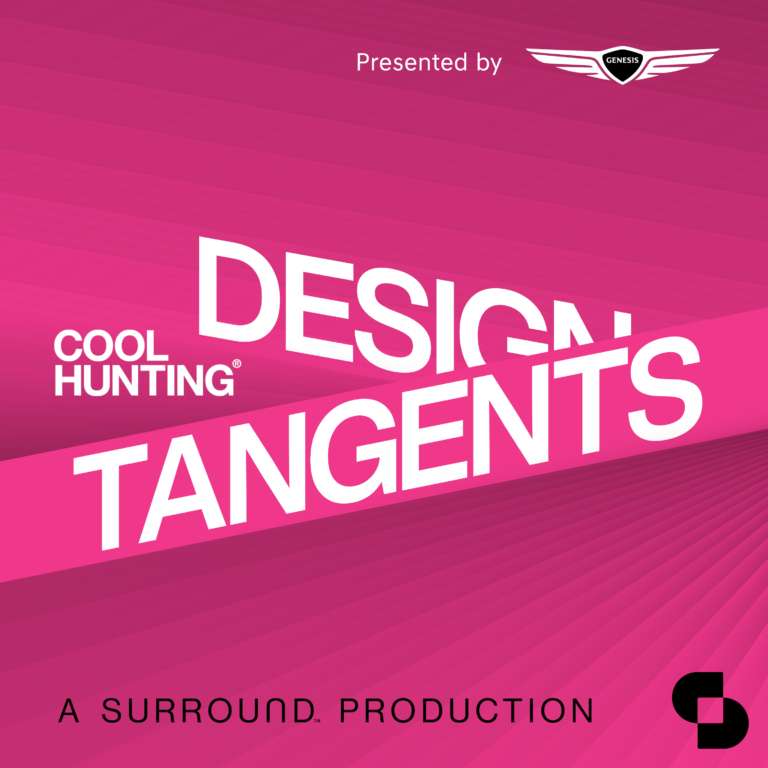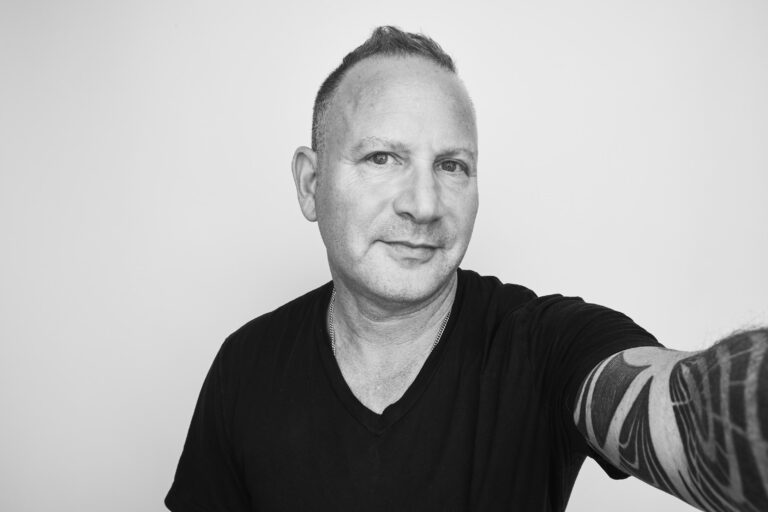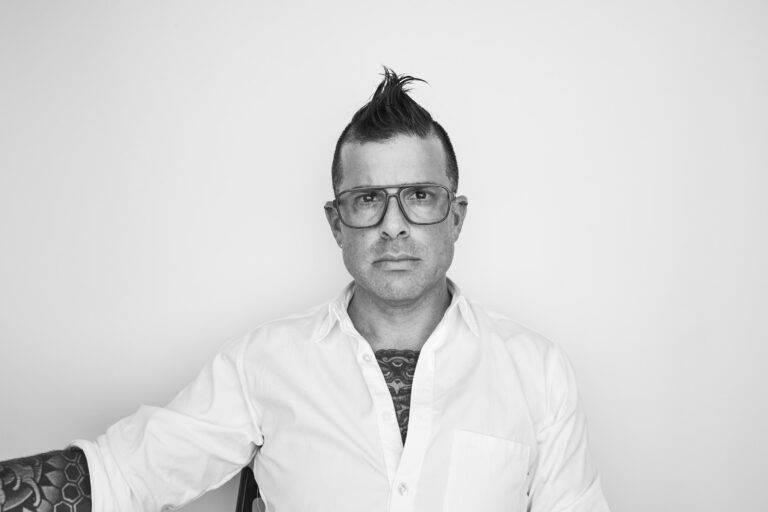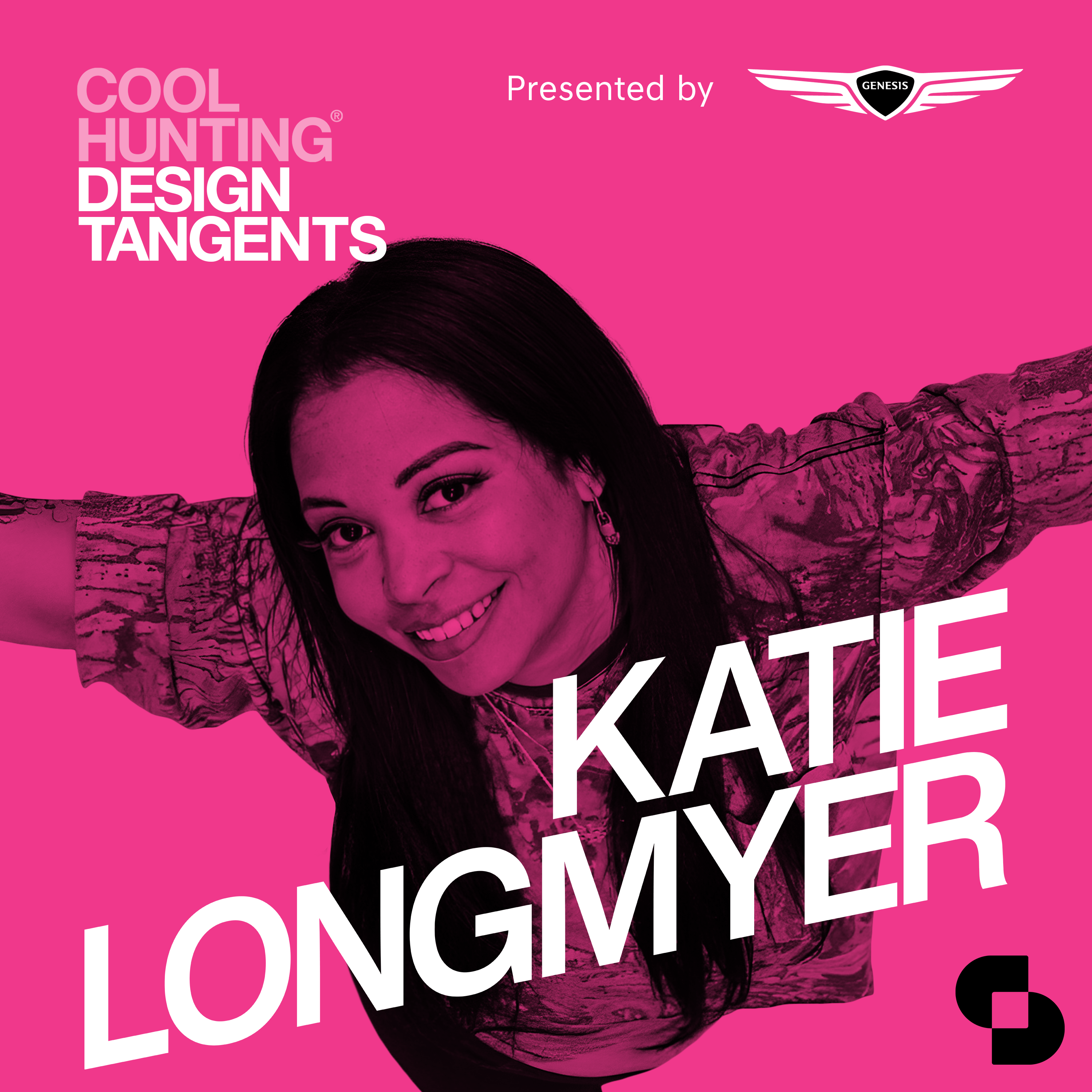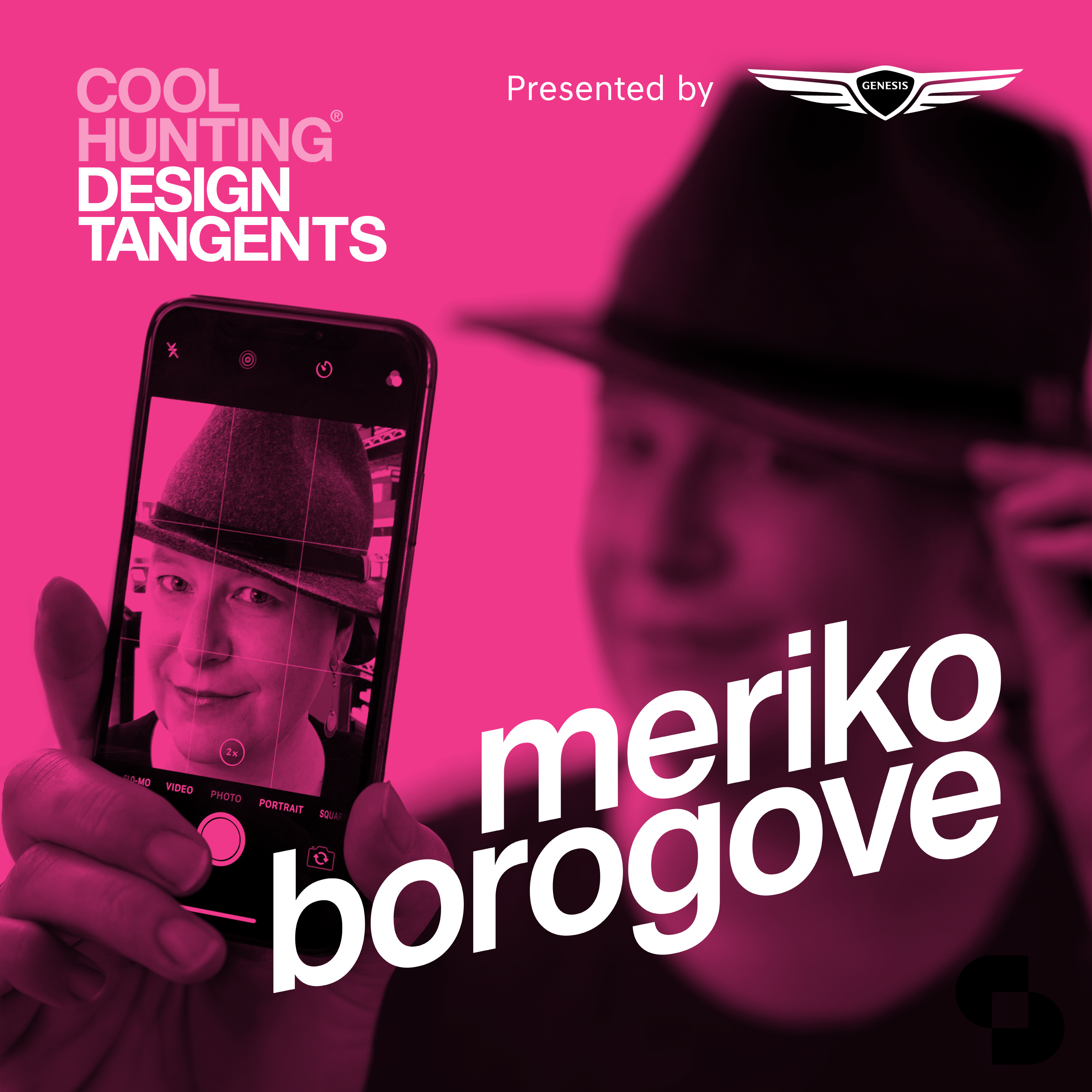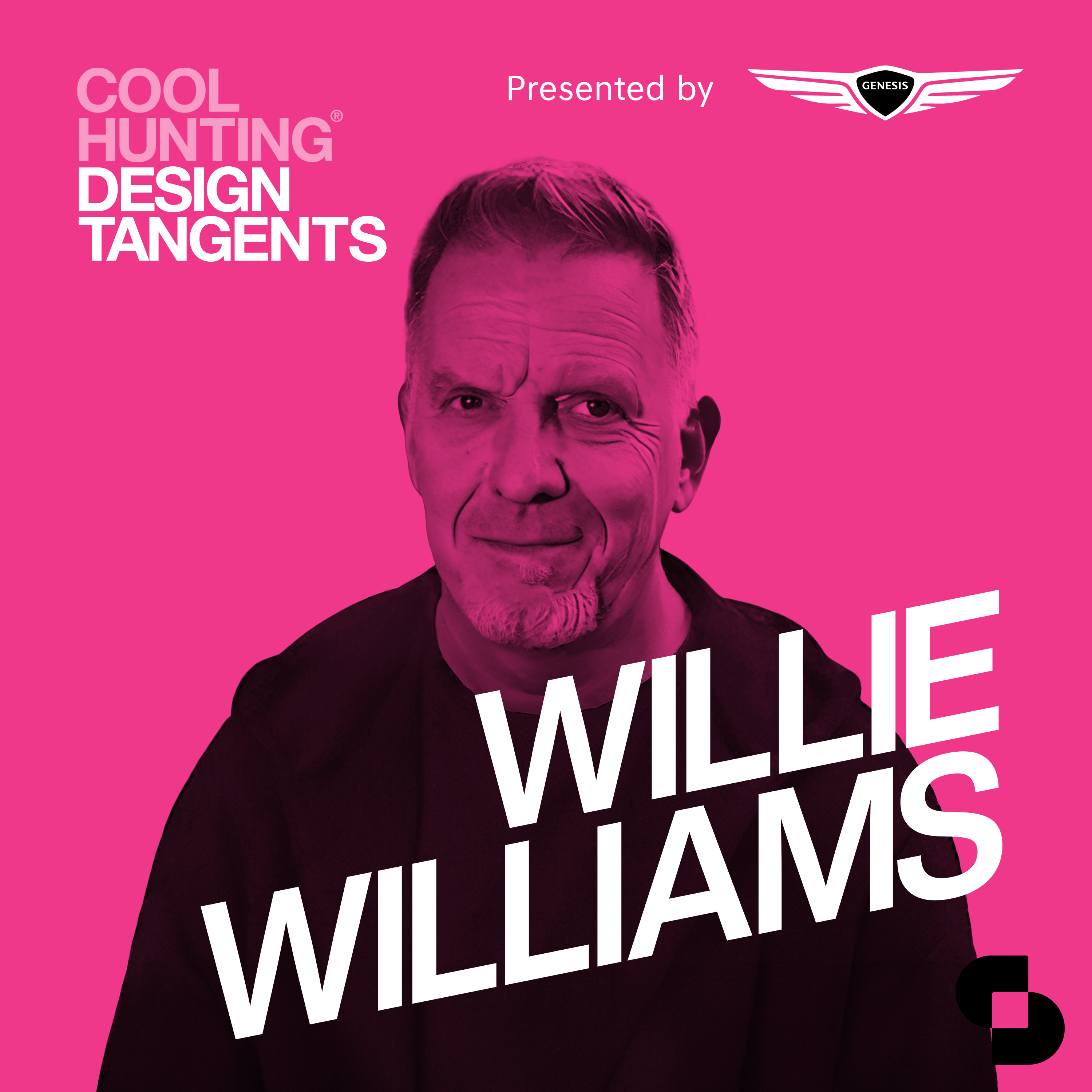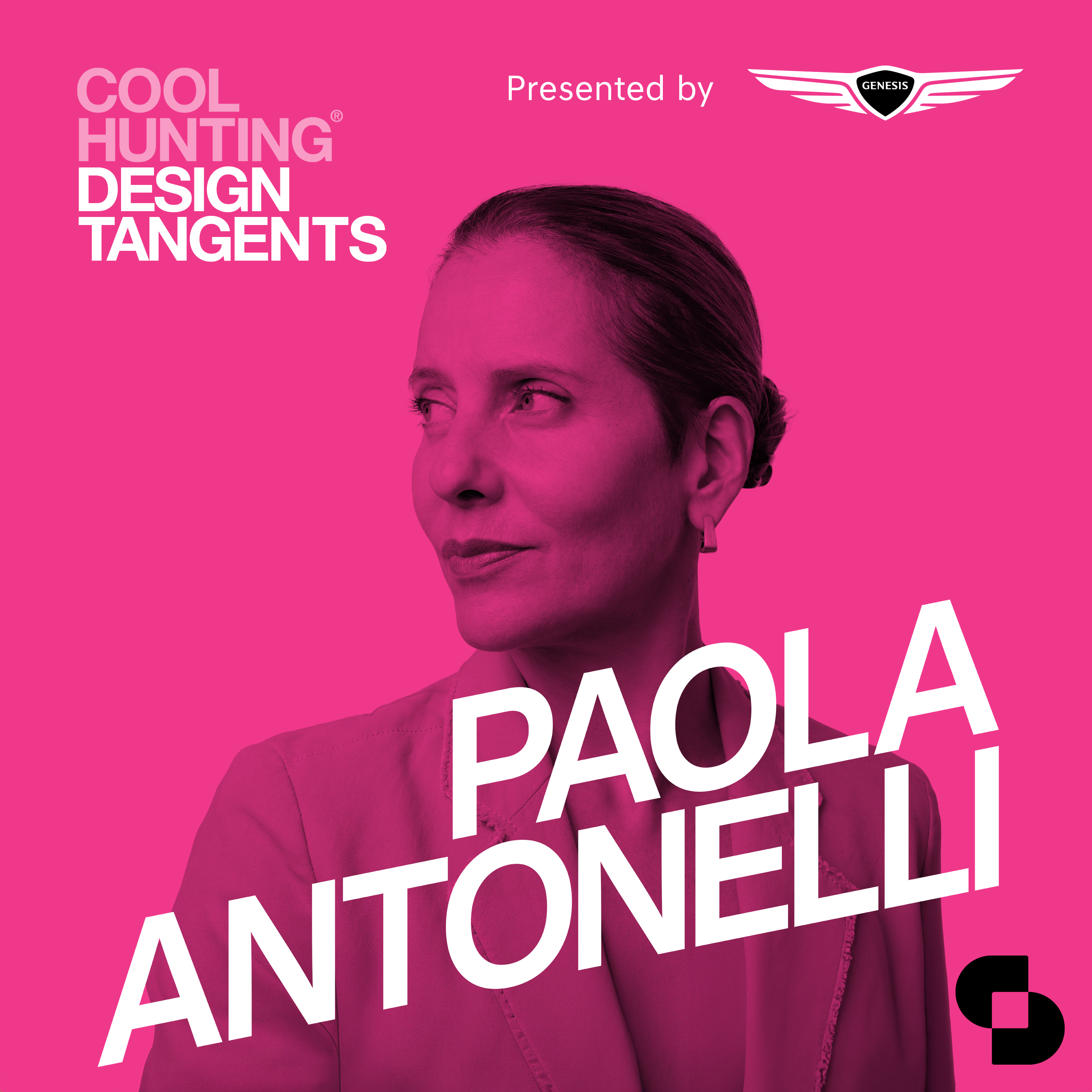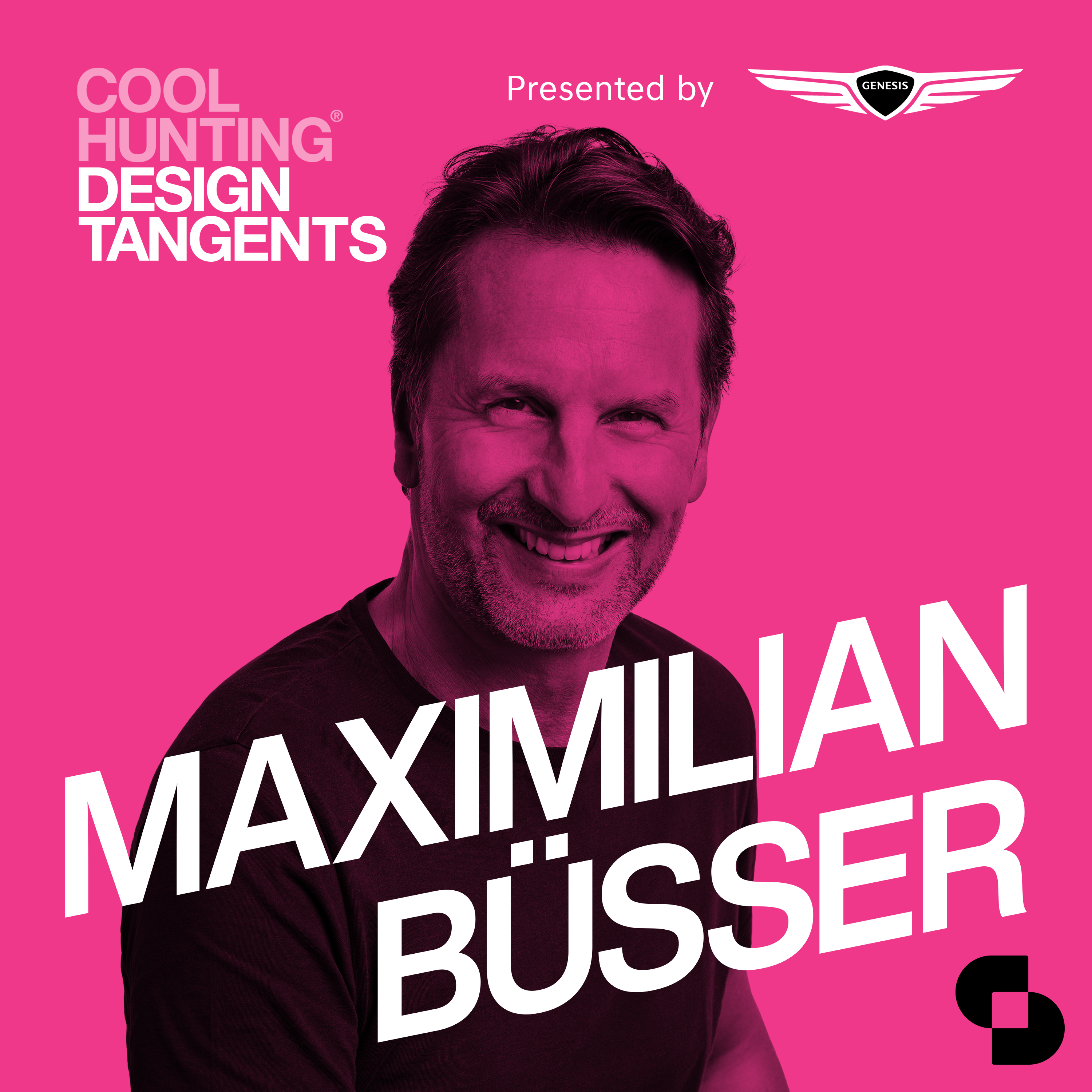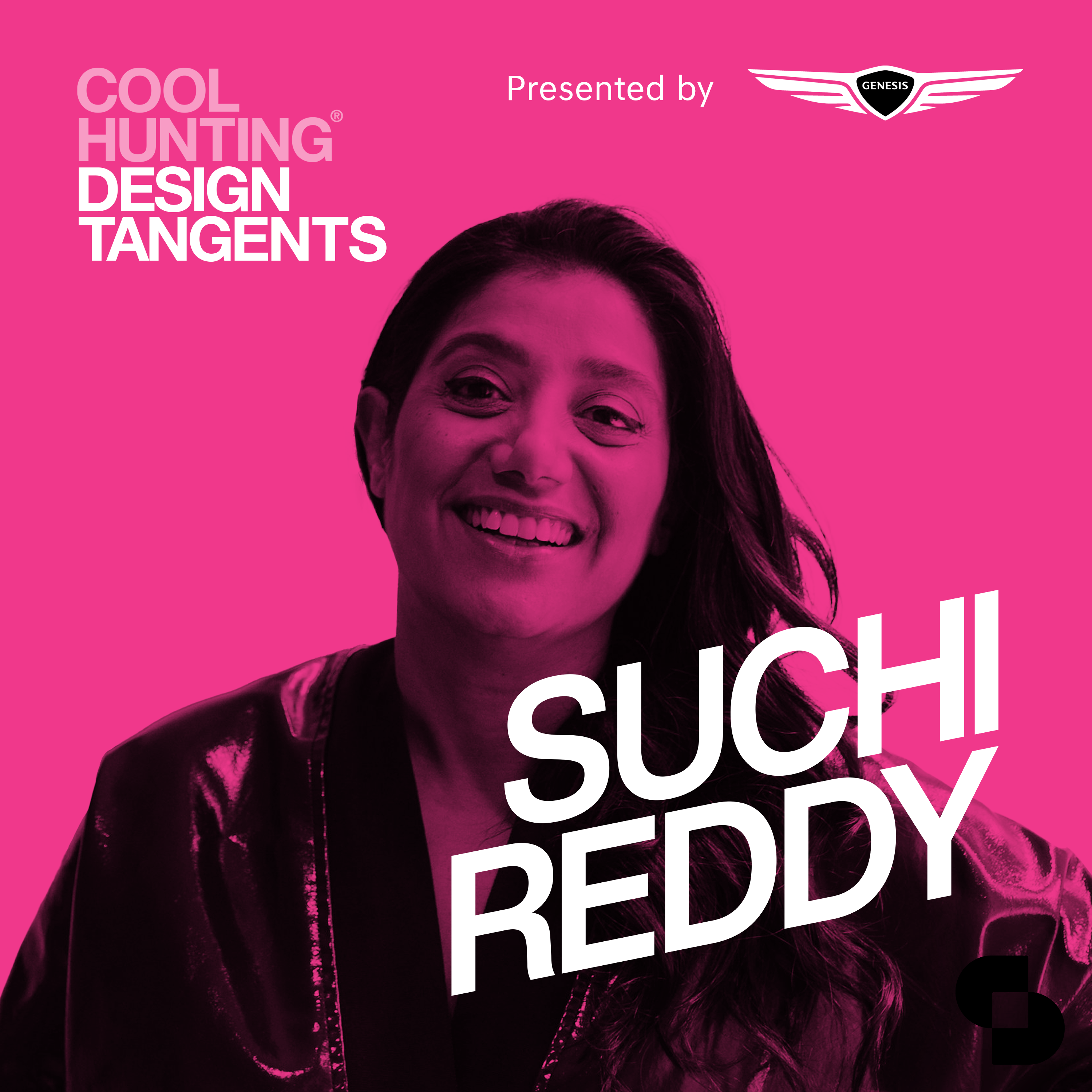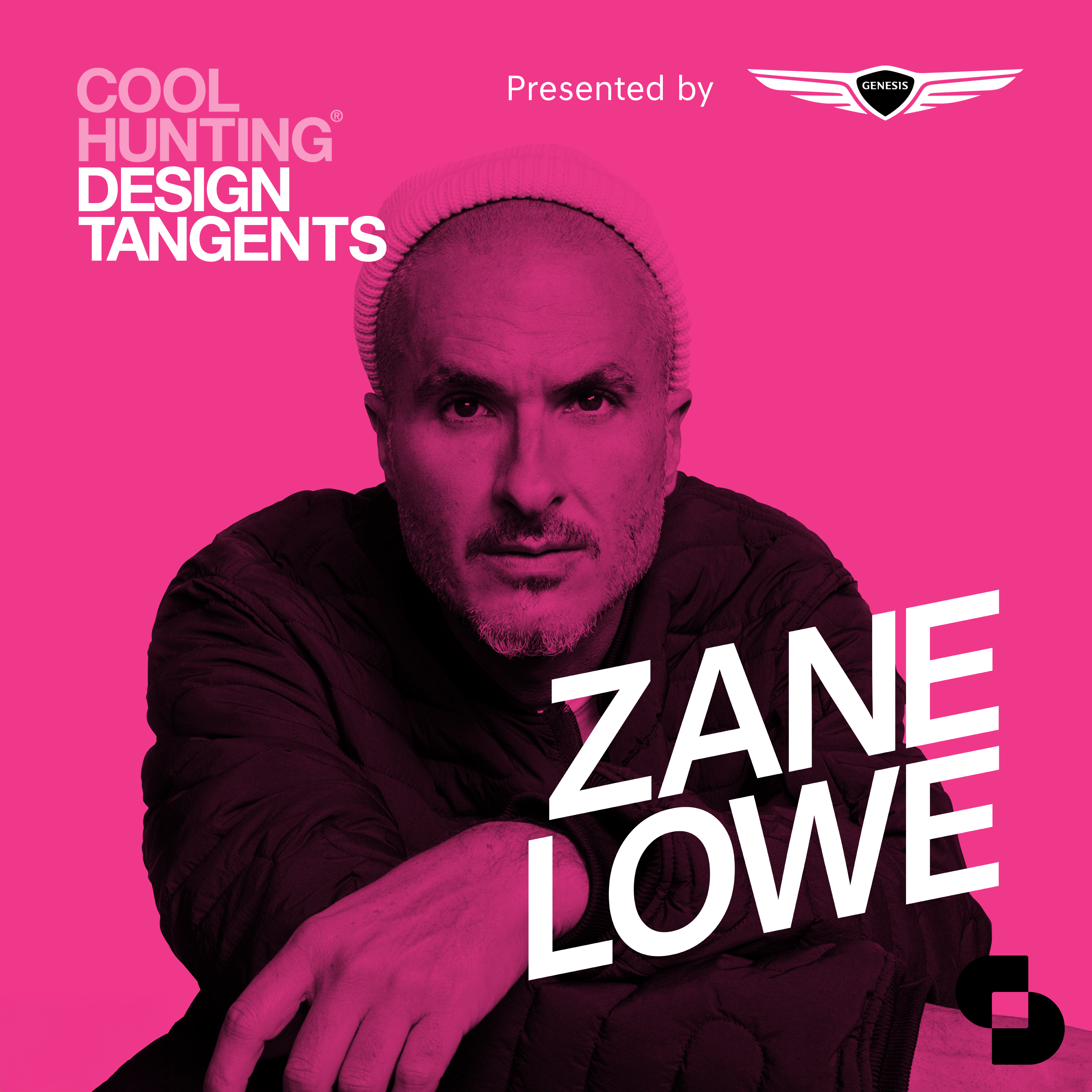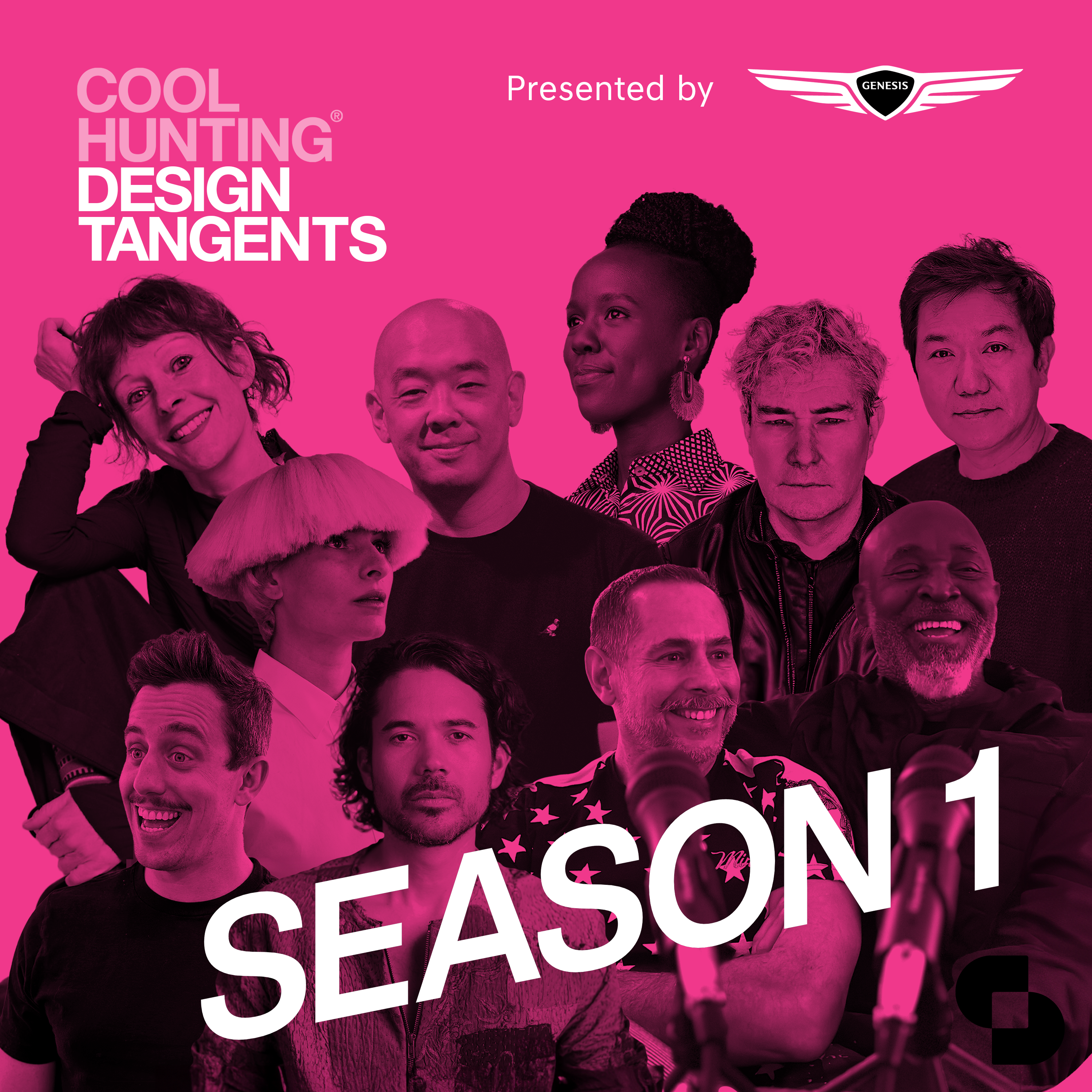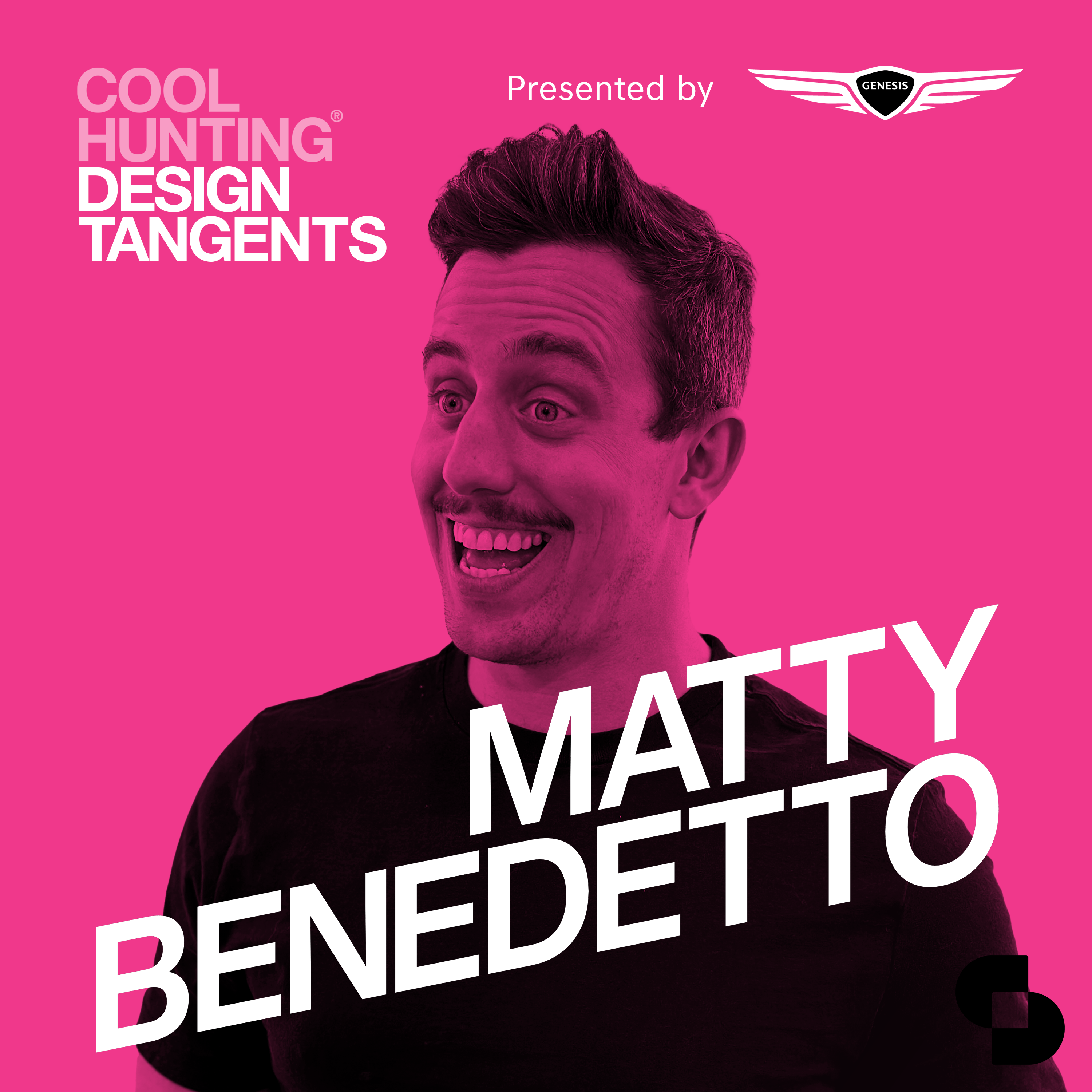Whenever Josh, Evan and Jihan Zencirli get together the energy is high and the tangents are profound. Jihan is an installation artist, big thinker and positive pop culture force. In this episode they cover her early days making balloon sculptures, the pageantry of religion, art cults, Donatella Versace and learnings from her time in web3 working with the Doodles.
Links:
designtvbysandow.com/programs/jihan-zencirli-geronimo-cool-hunting
Social:
Discover more shows from SURROUND at surroundpodcasts.com. This episode of Design Tangents was produced and edited by SANDOW Design Group.
Special thanks to the podcast production team: Rob Schulte, Hannah Viti, Wize Grazette, and Samantha Sager.
Transcripts, show notes, and links for each episode of Design Tangents can be found at surroundpodcasts.com/design-tangents
[00:00:00] Jihan Zencirli: I am Jihan Zencirli. I go by Geronimo sometimes. What do I do? I think, I don’t know. I just ask questions and I’m curious about things.
[00:00:15] Evan Orensten: Welcome to Design Tangents a podcast that goes behind the scenes with creative changemakers to learn about their work, inspiration, challenges, and philosophies.
[00:00:24] Josh Rubin: I’m Josh Rubin.
[00:00:25] Evan Orensten: I’m Evan Orensten. We’re the founders of Cool Hunting, and if you want some really good tangents. This episode we’re talking about art cults, thousand year art projects,
[00:00:37] Josh Rubin: balloons, NFTs
[00:00:39] Evan Orensten: Donatella Versace. This may be our halo episode for design Tangents.
Very grateful to be here in Los Angeles with Jihan Zencirli, aka Geronimo and many other things.
[00:00:55] Josh Rubin: Hi Jihan.
[00:00:56] Jihan Zencirli: Hi Josh. Hi Evan.
[00:00:58] Evan Orensten: Hey, Jihan.
[00:00:59] Josh Rubin: Welcome. [00:01:00]
[00:01:00] Evan Orensten: You’re a bit of a global nomad like us. You’re often between New York and LA but also lots of other places.
[00:01:07] Jihan Zencirli: I go wherever they want me. Honestly. Uh, if you invite me, I come.
[00:01:12] Josh Rubin: You do so many different. Things you have worked in sculpture and in performance and digital space and installations, and you create characters and moments that come and go, and I would love to hear how you would describe your creative through line.
[00:01:34] Jihan Zencirli: It took me years to think of myself as an artist because I just was myself.
I’m an only child. Uh, my parents were divorced. My mom’s a teacher. My dad lived in Turkey. I had a very quiet upbringing and I was around a lot of adults. I was around my great-grandparents. I was around my grandparents. I was around cousins and uncles and aunts that were all much older than me
[00:01:58] Evan Orensten: getting some Wonka vibes,
[00:01:59] Jihan Zencirli: [00:02:00] Wonka Total, we all slept in the same room.
We all shared a family, family bed, and I think I, I spent a lot of time with adults and by myself, and so the things that you’re interested in adjust, and that gave me a, a, a place for my own creativity that was just between me and myself, and I had really creative people who were around me. I, I had a lot of religion from many different areas.
My father, Sufi, uh, Muslim, and my mom is Mormon and I was raised with people who really loved beauty and who really loved the, um, I’ll call it pageantry, but the art of expression. To go to church or to go to mosque is a preparation where you dress up and it’s a different moment than the rest of the week, and you go and you might sing, you might meet people, you learn how to speak to people about something that’s really [00:03:00] personal.
And so over the years of learning about how to talk about what I. It created my artist’s heart, but because it was just me, I never had a turning point of thinking like, okay, I’m an artist and, and all of these things I’m doing are art. I was just curious and interested and doing what I could with what I
had.
[00:03:23] Evan Orensten: We did a project together a couple years ago.
[00:03:25] Jihan Zencirli: We did Mm-hmm!.
[00:03:26] Evan Orensten: And we wanted to do a video. Of you, like behind the scenes video like we typically do, like studio visits and all that, and you said, well, I’m not comfortable with that because I have my artist persona.
[00:03:36] Jihan Zencirli: Yes.
[00:03:37] Evan Orensten: Which is different than my personal persona,
[00:03:39] Jihan Zencirli: Uhhuh,
[00:03:40] Evan Orensten: and I want to portray.
You know, the artist, not the person making the art.
[00:03:45] Jihan Zencirli: Sure.
[00:03:46] Evan Orensten: So how do you reconcile?
[00:03:48] Jihan Zencirli: Well, first of all, I have to Hand it to you both because you were, you had such a, uh, a beautiful formula for your videos and you allowed me to do something really fun and interesting. And we used a great team that I had [00:04:00] worked with for the New York City Ballet, which was sort of the format that I had begun.
I had created a video where you might think that I might be introducing the project or a concept, but I’ve turned it on. Its. So that I don’t take it so serious and, and other people don’t take it so serious. But also it’s an art piece on its own that exists outside of the item that I’ve made so that it lives.
For the audience beyond the moment of this ephemeral experience and sculpture, but it’s its own experience. I mean, honestly, as just a human being, creating a piece that kind of, um, adjusts the narrative, allows it to just kind of make fun of like how serious the art world can be. I’m a balloon artist.
Let’s be funny about it. Let’s be, let’s be
silly.
[00:04:46] Evan Orensten: One of my favorite parts of that is you saying artists are earnest
[00:04:49] Jihan Zencirli: artists are earnest artists, are artists are earnest.
[00:04:52] Evan Orensten: Um, and we’ll definitely share that.
[00:04:53] Josh Rubin: That video will be on design tv. We brought you in on something which was on behalf [00:05:00] of a brand.
This was a commercial project. Everyone was thrilled with the outcome. How do you maintain your integrity? When doing commercial work, right. You make art.
[00:05:09] Jihan Zencirli: Mm-hmm.
[00:05:09] Josh Rubin: And sometimes your art is not part of a brand experience or underwritten by, you know, someone who wants Yeah. To have a, a, a piece of the story.
[00:05:21] Jihan Zencirli: Sure.
[00:05:21] Josh Rubin: And other times it’s, you know, there’s a, there’s a commercial layer to it. But it’s still, I don’t know, like it’s, it’s, it’s entirely yours and entirely recognizable in both of those scenarios, at least everything that I’ve seen.
[00:05:33] Jihan Zencirli: Well, let me step back and just give you the evolution of how I financially like built the business.
I began by, um, Buying some balloons. I was playing around with them and I started making these very large kind of floating sculptures. I moved to LA and almost overnight I started receiving orders from people around the world who just [00:06:00] wanted to buy it. And so I started off with a product. I started off kind of in a commercial space where I was sending out orders.
I was deliver. Items all across the city. I,
[00:06:12] Evan Orensten: Like a balloon bouquet kind of thing?
[00:06:14] Jihan Zencirli: Uh, more or less
[00:06:15] Josh Rubin: Baloon-a-gram?
[00:06:16] Jihan Zencirli: Yeah. Yes. And I would, I would dress up, I had a beetle at the time and I’d, you know, people were just like so charmed, like how did you fit that in your car? I had a helium tank and I started off selling kits.
Anthropology had had created a wedding line beholden, and they, they were like my exclusive partner for. Uh, stocking balloon kits at their stores and on their website, and that was a big collaboration and a big order for me. And then I, I sent kits for these massive balloons and tassels across. The world and I’d fly around and I would install these big events.
And through that I developed a working studio and I had employees and uh, I [00:07:00] had the surplus of material and I was going to be in a, a car, uh, commercial, uh, for Cadillac. There was a series. Um, about being a creative entrepreneur and they were like, let’s, let’s film it at your studio and can you bring some balloons out?
And I thought this would be a great opportunity to do something different. And in the process I started using the surplus of all of these balloons on the exterior of the building. And Sia, the singer who was a neighbor to my studio, drove by and she took a photo during the shoot and uh, she posted it. It began, then an opportunity for people to see.
I don’t just do events and parties, but I make art for the community and I put things on buildings and I was funding that myself. I paid my team, I bought the material at some point, and, and then it, it, uh, allowed me this space to kind of go from party event and. Kit builder [00:08:00] for balloons to, I make public art, um, around the world.
And then I started being hired for that.
[00:08:07] Evan Orensten: So one of those key moments you were talking about, you started, you know, like 2011 ish. Yeah. 2018 Sure. Was a very big moment. New York City Ballet brought you on board. Sure did. To work on their artist series.
[00:08:20] Jihan Zencirli: Yeah. Do you wanna know something? They DMed me on Instagram.
That’s how I got that gig. Yeah, that was, I know that that was one of the easiest gigs I’ve ever received. I mean, at this point, I hadn’t noticed the messages, but I had had, I had, uh, from Karen Gerdy from, uh, she’s in charge of the programming. She’s an incredible leader at the New York City Ballet, and she’s been there for many, many years.
And she just slid into your dms? She slid into my dms, my unread dms, and then I finally realized that I had all these messages accumulating and she’s, you know, uh, asking, asking if I’d just get on the phone with her. It turned into, One of the most important experiences of my life in validating experiences of my life.[00:09:00]
The New York City Ballet really stretches your imagination and what you might be able. To do.
[00:09:06] Evan Orensten: Yeah. There was this huge installation in the foyer of that beautiful auditorium. Yes. That beautiful performance space was filled with be balloons. I love this sensation of like the overnight success story. You know, it’s like, oh, all of a sudden no one heard of you.
Now they have, cuz you’re in the public limelight. You’re in New York magazine and everyone’s talking about this beautiful thing. But in fact you’ve been schlepping around in a Beatle all over LA for years developing this kind of art, form and and practice that kind of seven years later manifested in this very visible, very public, very well received.
Installation
[00:09:46] Jihan Zencirli: Indeed. However, I have to say there were some, um, there was a phenomenon that happened when I moved to LA in 2011. Joy Cho, she had logged about me, and this was in the era of when people were reading blogs and they were turning to [00:10:00] them as tastemakers and to learn about culture. Soon after that, I was featured in Daily Candy in the National Guide and then the local guide.
That was an incredible moment within the first six months of start. This balloon enterprise, I had this national campaign that was also a commercial, and I had, I mean, it was, it was incredible. So, um, all this aside, something happened which changed the course of how I existed on the internet, and that was when Osama Bin Laden, uh, was captured.
And the name of the operation was called Geronimo. And I had enough of a. Standing, like there were quite a few articles about me, but all of a sudden this world event catapulted my name and my, my visibility on the internet in a huge way. And I, it went from having 10 calls a day to a hundred calls a day.[00:11:00]
Very unique stances.
[00:11:08] Break 1
[00:11:08] Josh Rubin: I love the idea of people. Doing a search.
[00:11:13] Jihan Zencirli: Mm-hmm.
[00:11:14] Josh Rubin: To learn about the capture of Bin Ladin
[00:11:17] Jihan Zencirli: Yes.
[00:11:18] Josh Rubin: And finding balloons.
[00:11:21] Jihan Zencirli: Yeah.
[00:11:22] Josh Rubin: We haven’t yet mentioned that
[00:11:24] Jihan Zencirli: Uhhuh
[00:11:25] Josh Rubin: your. Work is presented under the name Geronimo.
[00:11:29] Jihan Zencirli: Yes.
[00:11:30] Josh Rubin: Most of the time
[00:11:31] Jihan Zencirli: I’ve, I mean, I’ll change my name by by the week. Sometimes I’m Fondazione Geronimo sometimes I’m Geronimo balloons.
Sometimes I’m just GERONIMO! Capitals with an exclamation point. I like to change and be different day to day,
[00:11:47] Evan Orensten: but you still have kind of, if you will, an artist persona and a
[00:11:51] Jihan Zencirli: sure.
[00:11:52] Evan Orensten: Public or private persona that’s separate.
[00:11:56] Jihan Zencirli: I mean, I think that a lot of things have changed for me over the past few years because [00:12:00] now the name doesn’t even belong to me to some degree.
It’s just the name of a large balloon, and it’s my name. I like to think of myself as the Q-tip or the Kleenex of the balloon industry.
[00:12:12] Josh Rubin: You did eventually set up a phone number and
[00:12:16] Evan Orensten: I remember that
[00:12:17] Jihan Zencirli: a toll free,
[00:12:17] Josh Rubin: a toll free number.
[00:12:19] Jihan Zencirli: Mm-hmm.
[00:12:20] Josh Rubin: And at a glance it’s like, oh, great, I want some balloons?. Call one 800, whatever the number is or was.
[00:12:26] Evan Orensten: Was there a jingle for it or what was it?
[00:12:28] Jihan Zencirli: There was no jingle that was specific to the line. I’m sorry to disappoint, but I did have custom music because from another project at a jingle made for me that was like… dun dun “GERONIMO” dun dun
[00:12:42] Josh Rubin: When calling that phone number,
[00:12:43] Jihan Zencirli: yes.
[00:12:44] Josh Rubin: It’s a little bit of a, it’s, it’s
[00:12:46] Jihan Zencirli: it’s a maze.
[00:12:46] Josh Rubin: It’s an art piece unto itself.
[00:12:48] Jihan Zencirli: What I wanted to create out of this phone tree was that on every number that you pick, a different experience would happen. And so one extension could take you to psychic Shirley [00:13:00] Lipner, and she was taking phone calls for a while.
I had a comedian friend. Taking phone calls on behalf of of me for a while. You can learn how to kiss on one of the extensions. There were many different experiences on any number combination you’d find.
[00:13:16] Josh Rubin: Did anyone ever get through? Did anyone ever leave a message?
[00:13:19] Jihan Zencirli: Two people got through the Denver Museum, famously known for their cryptic art collections and. Donatella Versace
[00:13:30] Evan Orensten: Like Donatella herself was going through your tree, or
[00:13:34] Jihan Zencirli: must have been. She didn’t leave a message, but apparently she had called it and someone who worked with her, when they sent me the introductory email, they said, we, she’s been trying to reach out to you on your number. Things adjusted in that project. But I went to Italy and I met her and she has the most supple, beautiful smelling skin I have ever experienced.
And she is genuinely, [00:14:00] like physically as spiritually the most warm person. I would change my entire phone strategy just to make, Donatella happy.
[00:14:09] Evan Orensten: I love how the woman from the New York City Ballet just got you right away. And when we called you, and I remember if it was the end of 2017 or early 2018, I had to talk to several assistants and product production people to get to you.
[00:14:21] Jihan Zencirli: Yeah.
[00:14:22] Evan Orensten: And it was a very,
[00:14:23] Jihan Zencirli: they were all fake.
[00:14:25] Josh Rubin: Was that you? Was that you every time in different course?
[00:14:27] Evan Orensten: No. They were zero.
[00:14:28] Jihan Zencirli: No. You met them in real life. Yeah.
[00:14:30] Evan Orensten: Eventually we met them real life.
[00:14:31] Jihan Zencirli: Yeah. There is a fake assistant account named after a real person who, upon my death receives 50% of my company. So, She deserves to have a forever email, and she was the first employee I ever had, and she was just, and is such an important person to an early, an early business owner’s life that I, um, yeah.
So she has a forever email that receives messages, and I can’t, I can’t expose the name just in case you receive an [00:15:00] email from
her
[00:15:01] Josh Rubin: think that’s an LA. Fake assistance. No, I would You do it regardless of where you
[00:15:05] Jihan Zencirli: live. Sometimes there just needs to be a like a little barrier. A barrier and a buffer for someone to be the bad cop or to allow there to be some breathing room to talk about things that are uncomfortable to speak to the artist or the owner directly.
Everyone wants to kind of run past the first. The first pass with someone who’s going to like, Hey, you know, is this gonna, is this gonna work? Can we be a little bit more informal about talking about this before we get on the phone with a person who’s maybe making a decision? So I think it’s a very, I think it’s actually a really nice thing.
Lying is not always nice, but I think, I think when I couldn’t afford to have someone, man, the emails all day. This worked out fantastically.
[00:15:47] Josh Rubin: Evan, can we have a fake assistant?
[00:15:48] Evan Orensten: I would love, I was,
[00:15:49] Josh Rubin: what do we, what do we name our fake
Jihan? What do we name Our fake
assistant?
[00:15:53] Jihan Zencirli: Fabricio
[00:15:54] Evan Orensten: . Um, well,
[00:15:55] Josh Rubin: Fabricio at cool hunting.com Yes.
Is not yet sense. Email address in use.
[00:15:59] Evan Orensten: Think [00:16:00] of our friend Fabricio in Paris. So it’s,
you know,
[00:16:03] Jihan Zencirli: Well then, then you actually have a voice because if you can kind of imagine who might be sending the email, then you have the voice that you’re using, you can always stay in character. And Fabricio responds differently than Evan and Josh.
Mm-hmm. And that’s, uh, yeah, I
think, I think
[00:16:17] Evan Orensten: I like that. We gotta work on that, Josh. So Jihan
[00:16:21] Jihan Zencirli: yeah.
[00:16:22] Evan Orensten: You’ve done so many things and, and that we were talking about the New York City ballet installation and that led to other. Projects and then in this great project we did with you and mm-hmm. Also, there’s been a lot of changes or, or evolution in web three and digital art and Yeah.
You to us, seem to be kind of an early artist of interest in that space and you took to it pretty brazenly. Has it kind of consumed your, your practice?
[00:16:55] Jihan Zencirli: It certainly felt like I was on a, on a, like in a rock band on tour [00:17:00] for the last year. So in a very funny turn of events, life shifted and my art shifted, and so the things that I was doing as an artist was no longer.
To serve the public because I couldn’t use the model that was working for me before, which was no one was going out. I, I, yes, exactly. I create art and then you come to this public space, but you can’t stand by anyone and you really be there for five seconds. It didn’t really work, and I was scared. I’ll be honest.
I didn’t know how I’ve returned to making the same art, and so I had to look. Well, what does this look like if I never go back to that again? And what was the point of what I was doing before? It wasn’t because I loved balloons. It was because I was creating something that. Was challenging to me. That was physically a huge feat that brought together interesting groups of people that forced some conversation of, how do you feel about [00:18:00] this?
Do you like it? Do you not like it? People have very strong opinions about balloons. So when Web three kind of came into. My life. I was already kind of thinking, what are the themes that I like to work in? It’s asking questions. It’s doing things that are a bit provocative, and it’s asking people to maybe adjust how they.
Thought of the world or an environment or a topic in a new way that has forced them to think. And I was asked to help on a project. It’s the Doodles Project, which is, has done extremely well. It has brilliant people who founded this company, um, and this IP that is based off of these very joyful charact.
The founders also, two of them were kind of the, the original creators of NFTs who worked for many years in developing this concept. And so they were incredible to work with. I came on to kind of build the strategy and [00:19:00] later my role kind of evolved to become the philosopher that would continually ask the questions of like, what are we doing for our community?
What are we doing in the bigger world. You have a country and you have a culture and they create a barter system or a value system of like, I need something and I have something, and we go from maybe trading tulips and and livestock to money. Web three is kind of the reverse. It’s its own country and started out with the.
And then from the money with all of these many different coins, we’ll call us different cities. All of those coins now have these kind of invented cultures that are all being connected to them. So you may align, you know you love living in New York, you love living in upstate. You might love X N F T project because that aligns with your ideals, your style, your taste.
So the world. [00:20:00] Blockchain and NFTs kind of speak to this reverse culture building and I think we’re still very, very early on with building these little micro communities. And the one that I worked on was really special from, um, My point of view because I got to, I got to design a lot of the experiences that we, that we had for our community, but I got to also experience it because I’m also a holder in, in the IP and the NFTs, and I got to be excited to have my identity also connected with my, you know, my icon, which was this balloon, believe it or not.
I got to meet people in real life who would travel all around the world to come to these events and just be with their country, be with their people. It was really exciting and very challenging, and it still is very challenging to think about how the world may change with. New currency. And I think that as an artist, like I wanna [00:21:00] ask all the questions.
Should we write with something other than a pen or a pencil? What should we be like? What should our lives look like? How can we challenge things that exist? Just because they’ve existed for many years, can we move it forward by just, but just questioning. And I, I think that that’s the most compelling part of web three for me is just asking the question like, could we do this differently?
And the merits of, of, uh, there’s very shallow merits of, of, of the blockchain. Um, Accessibility to your, your money is e extremely quick. It, it’s a unique arena that is not built on debt because you have to have the cash for it to exchange, which means these are not short investments. Like there’s no collateral.
You’re not gonna lose your home over it necessarily. There’s a bit more of a study process for how you’ll invest. It makes for an interesting community.
[00:21:54] Evan Orensten: As an artist though, we hear a lot. The best thing about NFTs is that the artist, [00:22:00] you know, we we’re kind of disintermediating the traditional industry of a dealer and a gallery and an artist.
And you work so hard, you sell a piece of work once you get X percent of that sale. And hopefully that work goes on and it gets sold and auction and all kinds of things. And yet the artist maybe gets some shimmer from that, but certainly doesn’t get any cash from that. So we hear a lot about, well, it’s so great for artists because.
You know, looped into that system and every time there’s a transaction, the artist gets compensated. No. A real
thing or not a real thing.
[00:22:32] Jihan Zencirli: Artists are not talking about that for their own benefits at all. I mean, I, I’d love to talk to an artist who hasn’t made it in more mainstream art culture that is killing it in NFTs.
It is the same community and culture and probably actually more difficult because less, there’s like anomalies right in, in the art world, Basquiat, the people that weren’t necessarily groomed to become the most famous artist of their era or. [00:23:00] Posthumously, but our world kind of like loves the backstory of an artist.
And so the taste is disour changes every generation for different criteria, whether it’s the style or the personal backstory or. You know, just the brand. The brand is a huge part of what sells an artist at an art gallery. And then taste makers and gallerist the few that are most, uh, the most vocal or I important to the scene, you know, financially gained from that, which is just how the business goes on the blockchain.
There’s a lot of anonymity. Unless you are creating really great art and someone sees that and creates like a, a platform for you, probably more in web two, you might be lost unless you are part of some sort of big branding opportunity. I don’t think it has yet really affected the small artists. I think if [00:24:00] you are an artist in I R L that hangs on the walls of a mu of a, of a gallery museum, That is where you can, uh, have access to web three working for you.
I think that N F T art for the most part is not very good. And so if you are an investor, if you’re doing it for the love of the game and you’re building up your wallet and you’re just wanting to experience the transactional, like ex, you know, buying something for five to $500. That’s one thing, but people are making investments that are just like the stock market.
It’s based on what you think it might be worth as an investment later on.
And
[00:24:41] Evan Orensten: it’s not driven by the art?
[00:24:42] Jihan Zencirli: No, it’s not. It’s it’s driven by, some people are driven by it for, I mean, there’s many reasons you could interview a lot of people for that, but it’s driven by. It’s viability and how, how hype it is and if there are other people who vetted along the way.
So I think it mirrors the standards of, [00:25:00] of the art world pretty closely. What I do think is very interesting about Web three and art is that there’s a history. So looking forward, 200 years, I don’t know what Web 900 will look like at that. But if we establish this backlog of understanding how things have moved through ownership, I think eventually everything will be listed this way.
Houses will be purchased on the blockchain and that’s how you’ll be able to understand, you know, the value of a home, how long it was held for. The, the historical value of that is really, really interesting. My father was born in Turkey in the early sixties, actually 1960. There’s no record of his birth.
What, how the world has changed in the last 60 years is incredible. The records of life now, you can’t adjust them.
[00:25:53] Evan Orensten: There’s no hiding.
[00:25:54] Jihan Zencirli: There’s no hiding. I think as just a human who lives on this planet at this [00:26:00] time, this is a really interesting moment for things to change or evolve.
[00:26:05] Josh Rubin: So when you were making public art, yes, you were fostering community and it was somewhat ephemeral community, but there were moments where people could come together and experience your work and appreciate your work and bond in the presence of your work.
And maybe that, maybe that they would leave and that’s it, and maybe not. Maybe there was, there was a little, a little more of a community that that formed and lasted longer. To me, that’s not web three or. Is that kind of community possible?
[00:26:37] Jihan Zencirli: I think it remains to be seen, and that’s for the builders of those communities.
You have to really have that in mind as you are building your community because you’re setting the tone for that. I don’t know if that’s every project’s ide like identity. I don’t know if that’s their value, but I, I think it has potential to be that. Sure. Someone maybe, maybe, we’ll, we’ll [00:27:00] design that experience, but I, I think, you know, whenever.
A new invention or innovation of technology comes forward. People are scared of what they’re losing. So if we automate cars, it means that we’ll no longer have to drive a car, which means we don’t have drivers and certain things will be obsolete, right? And there’s loss in culture too quickly. That way, I think we will still have everything we’ve always had and we might appreciate it more.
So think of books. All of a sudden we have a handheld book on an, you know, an app on any device that we have, but we still wanna gift a book and we still wanna receive a book, and we still wanna see a book on our shelf because that’s a memory and that’s, it has a scent. And it has a texture. And I think that sometimes a moment,
[00:27:52] Evan Orensten: like in a moment buying a book, On your tablet, but you remember receiving a book from someone or going to the bookstore and [00:28:00] seeing it and buying it?
[00:28:01] Jihan Zencirli: Yeah. I was flipping NFTs for a while and I would use the profits to buy art, physical art for my house and. I used that as a way to kind of fund a, like a, a larger collection for myself. But all this to say, I think sometimes you have to have something new dangled in front of you to appreciate what you’ve had all along.
And I think there’s some perspective that that built for the world and for just an appreciation for what we have.
[00:28:30] Josh Rubin: I love that.
[00:28:30] Evan Orensten: I love that too.
[00:28:38] Break 2
[00:28:38] Josh Rubin: We talked a lot about the past. Yeah. A little bit about the present. Do you even talk about what’s next? Yes. What are you working on?
[00:28:44] Jihan Zencirli: Well, look how I work. Is shifting dramatically. I’ve shifted dramatically as a human how I had this very interesting experience of being groomed for an art cult. That’s kind of an extreme way to say, a [00:29:00] group of people who go by a cryptic name and there’s no record of them on the internet, and they fund your art and you have to kind of pledge allegiance to them.
Let’s just say someone who has billions of dollars. Or organization or a family or a trust has billions of dollars and they want to see their money, inspire art and they wanna give money directly to the hands of artists. There are TV shows that are very famous that are connected to this group. There are movies, there’s activists that are part of this group.
Like it was a really interesting thing to see that this is, I mean, this is how arts were funded for many thousands of years. Someone would just want to see beauty happen and it inspired some questions in my mind, and it was very interesting and everyone was lovely, but this experience that I had in this moment of meeting these people and kind of deciding like, oh my gosh, am I gonna go down this path?
Someone asked me, what are you [00:30:00] gonna do in a thousand years? And I remember thinking, what an interesting question. I’m dead. What are you, do you guys have the elixir to life? So I thought, wow, that’s really interesting. I make art that exa, that like is the absolute opposite of that. I make things that they’re full value and virtue is that they’re there for a moment.
And they’re, then they’re gone. And if you make a smile and if, and if they don’t exist, it’s like, it’s ok. It might come back. It’s like a flower. It’s like they’re meant to die and that’s ok. And I started thinking about like, what if I was making something that did last a thousand years? And so that is what I’ve been designing, a concept that will last a thousand years.
And I don’t think I’ll live that long if I have my way. But the idea is how do you take an idea. And then move it through time and allow it to evolve and have an idea of what it might be in 500 years when technology can build this concept, [00:31:00] what it will be in 30 years, when I can kind of create this concept with like what our tools are today and then maybe what it would look like in a thousand years and.
It’s a very simple thing that I’ve designed. I have an uncle who works for nasa. He, he’s put his eyes on it and then he quit the job. Cause he was like, I can’t be done. It can’t be done. So it might defy, it might defy the laws of nature and of the elements at this moment, but I have, I have something that I’m working towards that is allowing me to think of the most permanent art being really like a gift for humans to take care.
And maybe I’ll get there. We’ll, ho I’ll, I’ll help.
[00:31:43] Evan Orensten: Is this like a pyramid kind of thing or is this like some ai? Oh,
[00:31:48] Jihan Zencirli: could be both. I always think of projects in terms of hosting some vibe. I want you to experience the entire evening the exact way that I, Vic that I think it should be. [00:32:00] I love tv. I never thought I would be interested in creating something for that format, but I think that’s the ultimate party to host and I get to decide.
I mean, theoretically I get to decide the sound and the flavor and being able to create such a specific vibe is really interesting to me and has been inspiring and that’s what I’ve worked on. And I, I have a writer’s studio downtown and. I put in my hours every day and that’s, that’s the thing that is exciting.
And I wake up in the middle of the night and I think of another scene or another opportunity to express something or to challenge it and it’s my lover.
[00:32:42] Evan Orensten: I always love hanging out with you, which we’ve been doing a fair amount of. Yeah. LA New York, elsewhere, Europe. We’re, we are, our path intersect. I’m grateful for our friendship and your inspiration.
[00:32:54] Josh Rubin: Me too.
[00:32:55] Jihan Zencirli: This has been a, a great love story between the three of us for many [00:33:00] years, and one that I value so much and I learned you were always continually involving, you’re the Madonnas of this scene. You guys, you move, you should, the listeners should know that you’re both wearing gold teeth and have boostieas as well.
[00:33:18] Josh Rubin: Okay?
[00:33:19] Evan Orensten: Where can people learn more? Jihan slash Geronimo and how can they find you
[00:33:25] Jihan Zencirli: like until something is perfect and ready. I felt no need to speak up or say anything to the world.
[00:33:32] Evan Orensten: That said, you do have a hand on instagram.
[00:33:35] Jihan Zencirli: Oh, I do. It’s Geronimo. Geronimo? Mm-hmm. G E R O N I M
O.
[00:33:41] Evan Orensten: Sounds like a jingle.
Coming soon for that.
[00:33:45] Josh Rubin: Geronimo. Mm-hmm. Yeah,
[00:33:48] Evan Orensten: Geronimo. And you also have a web. There is a drink. You have a very thorough website with a lot going
[00:33:52] Jihan Zencirli: on in it. So much on my website and it’s, everyone should check it
[00:33:55] Evan Orensten: out. It’s
[00:33:56] Jihan Zencirli: pretty intense. Geronimo in space.com. [00:34:00] Dot com.
[00:34:01] Josh Rubin: Thank you, Jihan.
[00:34:03] Evan Orensten: Thank you Jihan
[00:34:04] Jihan Zencirli: thank you Josh.
Thank you Evan. I love you both.
[00:34:09] Evan Orensten: Thank you for listening to this episode of Design Tangents with Cool Hunting. Make sure you hit the follow button wherever you listen to podcasts so you don’t miss an episode.
[00:34:18] Josh Rubin: Design’s tangents is proud to be part of the Surround. Podcast Network. You can check out many other amazing design and architecture related podcasts at Surroundpodcasts.com.
That’s podcasts with an S.
[00:34:31] Evan Orensten: We’re psyched to partner with the Studio by Sandow to make our show possible. Huge thank you to our production team, Samantha Sager, Rob Schulte, Hannah Viti, and Wise Grazette. Our theme music is by the amazing Matthew Dear.
[00:34:47] Josh Rubin: And thank you to Genesis for presenting this debut season.
Stay tuned for the next episode of Design Tangents and learn more about us at [00:35:00] coolhunting.com.

